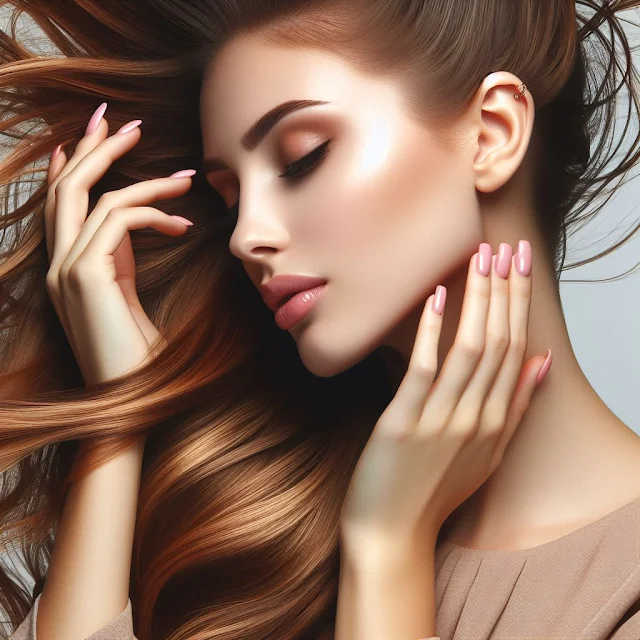Key Points:
- Hair Types: Hair types vary among individuals, and each type requires specific care.
- Hair Care Routine: Following a regular hair care routine is crucial for maintaining healthy and shiny hair.
- Washing Hair: Choosing the right shampoo and conditioner for your hair type is extremely important.
- Nourishment and Hydration: Regularly nourishing and hydrating your hair is necessary to prevent damage and dryness.
- Styling: Using heat styling tools moderately and avoiding tight hairstyles.
Understanding Hair Types
Hair varies from person to person and can be generally classified into four main types:- Normal Hair: Normal hair is characterized by a healthy and shiny appearance, with a balanced oil production.
- Dry Hair: Dry hair lacks moisture and natural oils, making it brittle and prone to damage.
- Oily Hair: Oily hair produces excess oil, making it appear greasy and heavy.
- Combination Hair: Combination hair combines characteristics of both dry and oily hair, with an oily scalp and dry ends.
Table of Hair Types and their Characteristics:
- Hair Type Characteristics
- Normal Healthy, shiny, balanced
- Dry Brittle, flyaway, prone to damage
- Oily Greasy, heavy, shiny
- Combination Oily scalp, dry ends
Hair Care Routine
A hair care routine should include the following basic steps:- Washing Hair: The frequency of hair washing depends on the hair type, but generally, it is recommended to wash it two to three times a week.
- Conditioning Hair: Hair should be conditioned regularly using a conditioner suitable for the hair type.
- Deep Conditioning: It is advisable to deep condition your hair once a week using masks or natural oils.
- Styling: Heat styling tools should be used moderately, and tight hairstyles that cause hair damage should be avoided.
Washing Hair
Choosing the right shampoo and conditioner for your hair type is crucial. Here are some tips:- Normal Hair: A mild shampoo and conditioner can be used to maintain the balance of the hair.
- Dry Hair: A moisturizing shampoo and conditioner are preferred to compensate for the lack of moisture.
- Oily Hair: It is recommended to use a shampoo designed for oily hair to remove excess oil.
- Combination Hair: A shampoo for normal hair can be used with a moisturizing conditioner for the ends.
Nourishment and Hydration
Regularly nourishing and hydrating your hair is necessary to prevent damage and dryness. Here are some effective ways:- Natural Oils: Natural oils such as coconut oil, argan oil, and olive oil can be used to nourish and moisturize hair.
- Hair Masks: There are many nourishing and moisturizing hair masks available in the market, and they can also be prepared at home using natural ingredients.
- Hair Serum: Hair serum is used to smooth hair and prevent frizz.
Styling
Heat styling tools such as hair dryers and hair straighteners should be used moderately to avoid hair damage. Here are some tips:- Use Low Heat: It is preferable to use a low heat setting when using heat styling tools.
- Use Heat Protectant Products: It is advisable to use heat protectant products before using heat styling tools.
- Avoid Tight Hairstyles: Avoid tight hairstyles that cause hair pulling and damage, such as tight ponytails or tight braids.
Delving Deeper into Hair Care Practices
Beyond the basics of hair care routines and understanding hair types, let's explore some additional practices and considerations for maintaining healthy and beautiful hair:
 |
| Hair Care | Healthy and Beautiful Hair |
Scalp Care
- Scalp Massage: Regular scalp massage can stimulate blood circulation, promoting hair growth and overall scalp health.
- Exfoliation: Gentle scalp exfoliation helps remove dead skin cells and product build-up, creating a healthy environment for hair growth.
- Treatment for Scalp Conditions: Addressing scalp conditions like dandruff or psoriasis is crucial for optimal hair health. Consult a dermatologist for proper diagnosis and treatment options.
Hair Treatments
- Protein Treatments: These treatments can help strengthen hair that is damaged or prone to breakage.
- Keratin Treatments: These smoothing treatments can reduce frizz and improve manageability, especially for those with curly or frizzy hair.
- Hair Gloss Treatments: These treatments can enhance shine and add vibrancy to dull hair.
Hair Cutting and Trimming
- Regular Trims: Trimming split ends prevents further damage and promotes healthy hair growth.
- Haircut Styles: Choose a haircut that complements your face shape and hair type.
Hair Accessories
- Avoid Tight Hair Ties: Opt for gentle hair ties that don't pull or damage hair.
- Silk or Satin Pillowcases: These reduce friction and prevent hair breakage compared to cotton pillowcases.
Diet and Lifestyle
- Balanced Diet: Consuming a diet rich in protein, vitamins (especially biotin), and minerals supports healthy hair growth.
- Hydration: Drinking plenty of water is essential for overall health, including hair health.
- Stress Management: Chronic stress can contribute to hair loss, so practicing stress-reducing techniques like meditation or yoga is beneficial.
Additional Tips
- Avoid Over-washing: Washing hair too frequently can strip away natural oils, leading to dryness.
- Air Dry When Possible: Let hair air dry whenever possible to minimize heat damage.
- Be Gentle When Brushing: Use a wide-tooth comb and avoid harsh brushing, especially when hair is wet.
- Protect Hair from Sun and Chlorine: Wear a hat or use hair products with UV protection to shield hair from sun damage. Rinse hair thoroughly after swimming to remove chlorine.
Conclusion
Caring for your hair involves a holistic approach, encompassing proper hair care practices, a healthy lifestyle, and seeking expert advice when needed. By understanding your hair type, following a suitable routine, and incorporating these additional tips, you can maintain healthy, strong, and beautiful hair that enhances your overall well-being and confidence.

